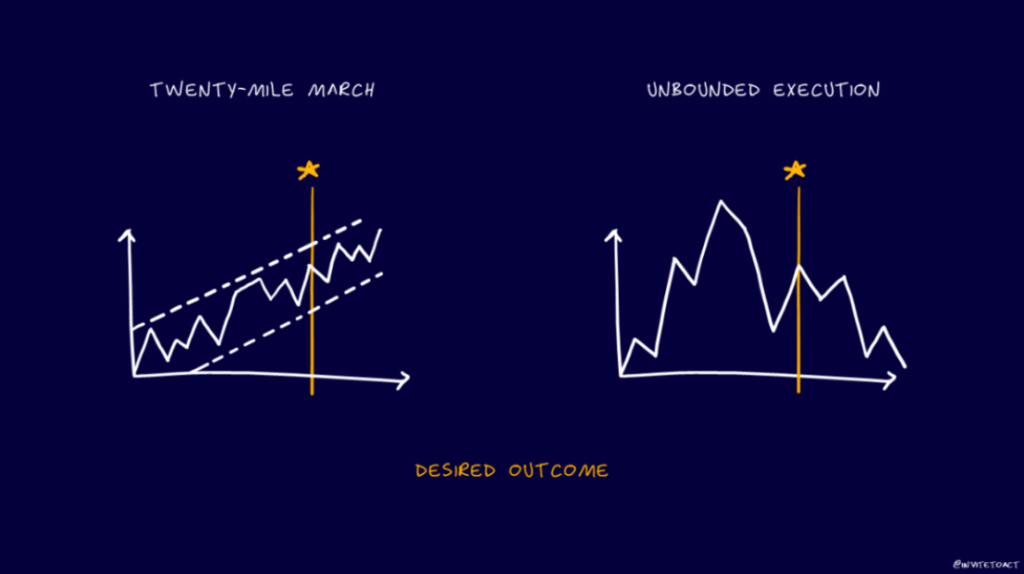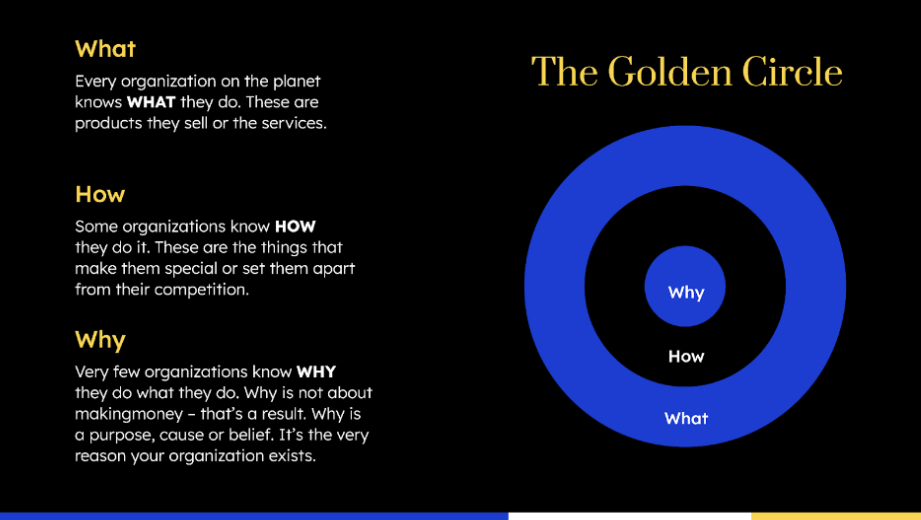Search Engine Optimization
What’s Covered in this Article
- Start with why
- Alignment with the leadership team
- 20-mile march mindset
- Know your numbers
- The right definition of leadership
- Hire for intangibles
- Leverage data, but trust your gut
At Grit, we spend a significant amount of time discussing leadership. Heading into 2023, one of the charges that I gave the team was to believe that if each of us can improve our leadership by 10% this year, the compounding effect of that leadership growth will outperform even a 50% improvement in our technical skills. While these percentages are less than scientific, the intention is clear. Leadership growth over indexes on its ability to impact our organization’s performance.
The topic of leadership is far from lacking in quality content that business leaders and marketers alike can consume. Nonetheless, I thought I’d share several things I’ve learned over the last 10 years about how to lead a marketing team effectively. By no means is this an exhaustive or perfect list, but hopefully, there is something in this list that either (A) provides a new perspective to consider or (B) provides a timely reminder or affirmation for you to lead your team with confidence.
1. Start with why
If you’re reading this and you know me at all, you aren’t surprised that I’ve put “start with why” as the first thing on my list for leading a marketing team. I’m obsessed with this concept that Simon Sinek crystallized with his book “Start with Why.” His Ted Talk from 2014 has over 61M views, and I believe marketing leaders everywhere should be obsessing over what Sinek calls The Golden Circle as a cornerstone to leading their teams effectively.
What is the Golden Circle?
The Golden Circle focuses on three things – Why, How, and What – with the key being that you must start with why. Here are quick definitions for each of these:
- What. These are the products or services that you offer.
- How. These things make your organization special and/or set you apart from your competition.
- Why. This is not about making money — this is a purpose, cause or belief. It is the very reason your organization exists.
What this looks like at Grit
- Why. We exist to cultivate virtuous leaders who change the world.
- How. We bring together the most talented digital and creative professionals, but bring a marketer-first mentality to amplify the results we drive.
- What. We provide digital marketing and creative services to clients and our own Owned & Operated brands.
Why this is #1 on my list
I wouldn’t be true to my word if I didn’t believe that this concept was at the heart of being successful as a marketer. If you’re leading a team, but do not understand the purpose of your company (or the company you are marketing for), then one of two things will happen.
- You will fail to inspire your customers to take action
- You will fail to inspire your team to deliver
As a marketing leader, building relationships with your customers and your team is paramount to your effectiveness, and all great leaders are effective. If you want to be an effective marketing leader, spend the time to make sure you understand your why. If you don’t think the company has one, you need to develop it and make sure that the entire organization knows it, believes in it, and can repeat it.
2. Alignment with the leadership team
The first team that MUST be aligned with your why is the leadership team. A great marketing leader must be a master at building relationships with the various members of an organization’s leadership team, from CEO to CFO and everyone in between. I’ll be spending some time breaking down a CMOs role in relation to all other executives in a future article, but for now, I’ll stay focused on gaining and maintaining alignment with leadership and why it’s critical to being an effective marketing leader.
A few years ago, I was listening to the Andy Stanley Leadership Podcast — if you haven’t listened, do! It’s amazing — and during that particular episode, he shared this insight: “People follow clarity, not character.” This almost enraged me when I first heard it. As someone who tends to lean on my character and intention to galvanize teams, this was a gut punch to think that none of that matters without clarity.
It hurt because at a fundamental level, it’s true. It doesn’t matter how charismatic or kind you are; if you can’t create clarity as a leader, people won’t follow you, and that is a problem. So, if you want to be effective in leading your team, put in the time to become someone who creates clarity, unifies your leadership team around that shared understanding, and communicates consistently to build trust within your organization.
If you feel like this is hard work, you’re right: it is. Everyone wants leadership to be easy, but the reality is that it isn’t. But then again, if it were easy, everyone would do it!
3. Cultivate a 20-mile march mindset
My dad spent the last 12 years of his career as the CEO of a private biotech company, which he later took public via IPO. One of the ways he described his job was to be a chief chiropractor. The organization was constantly getting out of alignment; his job was to pop it back into the proper place.¬Ý
I‚Äôve spent just over eight years building The Grit Group, and as a small and bootstrapped company, I‚Äôve learned firsthand what it looks like to stare failure in the face, but still find a way to keep going. I wish I could say I moved forward without flinching, but that would be a lie. Failing is scary. Fortunately, flinching or faltering is often the best teacher.¬Ý
A belief I’ve formed is that most instances that lead to organizations getting out of alignment stem from when individuals feel one of two emotions:
- Fear. When things go wrong, it’s easy to over or under-correct. Leading out of fear fosters confusion and weakens alignment.
- Confidence. When things go well, it’s easy to try to do too much. It’s good to be confident, but overconfidence can be just as harmful to alignment as fear.
Jim Collins talks about this in his book “Great by Choice.” In the book, he talks about the qualities of a 10xer — a leader who drove 10x the performance of a comparable leader during the same market conditions. One of those qualities is what he called “the 20-mile march.”

I love the 20-mile march concept. Essentially it says that companies that march 20 miles every day ‚Äî no matter if the conditions are good or bad ‚Äî will outperform companies that march 50 miles on good days and 5 miles on bad days.¬Ý
It’s tempting as a leader to get greedy when times are good. It’s also tempting to change your plans when the going is tough. Great marketing leaders have a 20-mile march mindset, and that steadiness creates an environment where people are both supported and held accountable to perform with no excuses. (If saying no excuses is hard for you like it is for me, I encourage you to check out Extreme Ownership!)
4. Know your numbers
Speaking of extreme ownership, knowing your numbers is a must for every marketing leader. Having started my career at Red Ventures, a performance-based marketing company, I learned early the importance of knowing my numbers. While this was intimidating at times, it drove a discipline in me that I believe all marketing leaders need to have.
You may be asking what numbers I mean. For me, I’m focused on knowing three categories of numbers to effectively lead my team:
- Know your revenue target. Your team needs to know the goal. The revenue target connects the dots to your organizational goal and keeps your team connected to how you strengthen the brand.
- Know your funnel. Your team needs to understand the parameters they’re working within. Knowing your funnel means knowing what a customer is worth to you and what you’re willing to pay to acquire them. When you know those two things, you know how to optimize the rest of the funnel to fit the parameters.
- Know your current trend. You have to know how your funnel is performing in relation to your revenue goal at all times. Extreme ownership of the numbers leads to accountability that drives results.
Sir Francis Bacon said, “Knowledge itself is power.” For a marketing leader, this is no less true. If you want to lead your team well, I encourage you to master these three aspects of knowing your numbers and model them for everyone to follow.
5. The right definition of leadership
These last three keys are a little less about marketing and a little more about leadership in general. The best marketers in the world can be terrible leaders. To do it well, it’s important to be clear about what leadership truly means.
Leadership is, first and foremost, a responsibility — not a reward. To be very blunt, in many ways, being a leader should be undesirable. True leadership requires immense sacrifice and selflessness (which we all resist). My favorite definition of leadership is Servant Leadership.
Our leadership team recently attended a WinShape Teams retreat, where our lead instructor provided this definition of a servant leader, “A leader compelled by the unshakable desire to enrich the lives of others.” They also provided the following definition of leadership as a whole, “Leadership is the stewardship of your influence.”
There is so much I could say about this topic, but for the purposes of this article, I’ll leave it at this. While Google may offer countless of other possible definitions for such a common concept, I’d encourage everyone reading this to wrestle with the definitions provided by WinShape Teams. Even the simple act of creating space in your heart and mind to wrestle with this will be good for your leadership growth.
6. Hire for the intangibles
Part of leading a team is getting the right people on the bus in the first place. The more thoughtfully you recruit for your team, the easier it will be to cultivate a winning group.¬Ý
In my opinion, great leaders hire first for the intangibles (i.e. perseverance, entrepreneurial nature, positive attitude) and second for the skillsets (i.e. SEO, writing, sales). I’m not saying that you hire people who don’t know what they’re doing. But, what I am saying is that when you hire for intangibles, you get players who can figure out how to do and excel at almost any job you put them in.
It’s essential to know what intangibles are most important to you as a leader when considering the culture within your team. Because we want to cultivate leaders at Grit, the intangibles I focus on relate primarily to our virtues: gratitude, wisdom, courage, care, grit, and celebration. Make sure you know your list and have questions that you, and others on your team, know to ask to evaluate a candidate’s intangibles.
Lastly, when you hire more for intangibles, you need systems that allow your team to learn quickly and flourish. You must build the standard operating procedures (SOPs) for your marketing department, and then allow your team to master it and make improvements.
7. Leverage data — but, trust your gut
Lastly, great marketing leaders trust their gut. As we talked about earlier, data is vital, but it doesn’t always tell the full story. Marketing trends move fast; consumer behavior is a moving target, and therefore leaders must be able to rely on their gut to respond quickly to changes in the market.
Here are a few of my beliefs about trusting your gut:
- If you have done your homework, studied your craft, and learned your market, then your gut is often quicker to the answer than your mind, which can easily distract you with fear and over analysis.
- Trusting your instincts is a learned quality. Great marketing leaders must cultivate the habit with their teams by encouraging them to trust their gut continuously. Be intentional about finding lower-stakes moments to lean into this so that when the big moments come — it’s more natural.
- Speaking of the big moments, these are the moments when you don’t have time to think — you have to respond quickly, concisely, and with conviction. Learn to trust your gut under pressure. That doesn’t mean you will hit every shot perfectly, but perfection isn’t the objective. The best leaders embrace failure and leverage it to learn and grow.
Conclusion
I’ll close out this list by emphasizing that last bit: embracing failure. If you are so afraid to fail, you’ll never trust your gut. If you want to be a 10xer as a marketing leader, you have to foster an environment where people know that failing is part of the process. When you create this type of culture, people begin to lean into their instincts, and your team becomes more decisive, confident, and effective!
I hope at least a couple of these seven tips were helpful for you. I‚Äôm sure there are plenty of keys to great marketing leadership that I‚Äôve left off, but I believe that if you can master these seven, you are well on your way to being an excellent leader.¬Ý
I would love to hear other thoughts, reactions, or comments about the characteristics of a great marketing leader. Feel free to leave them in the comments below or shoot me an email at alex@thegritgroup.io. I’m always happy to grab a drink — virtual or in-person — to talk shop about leadership and marketing!













